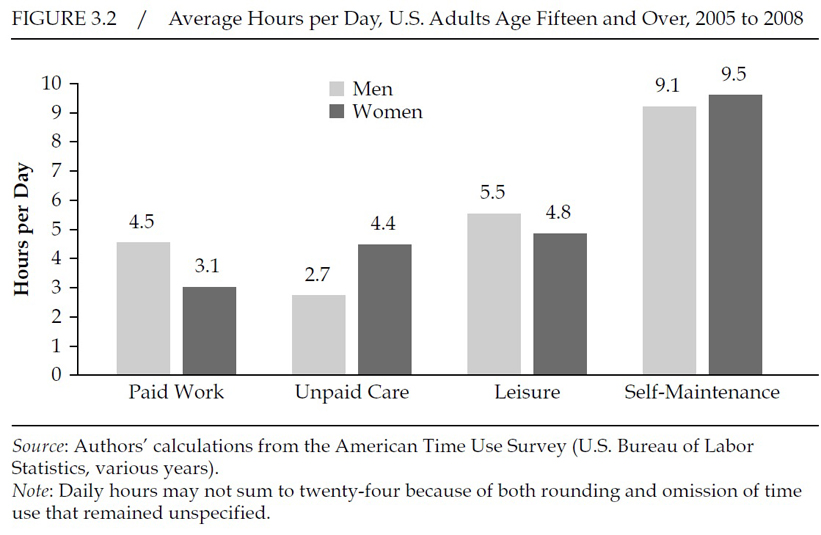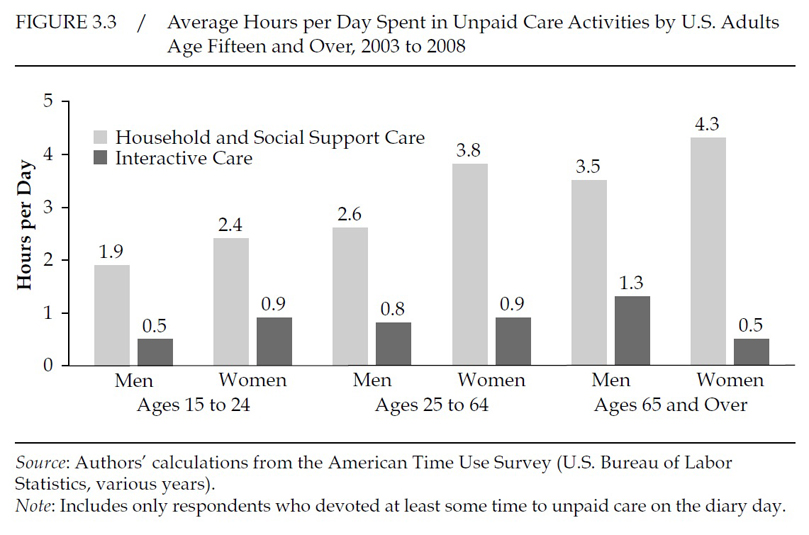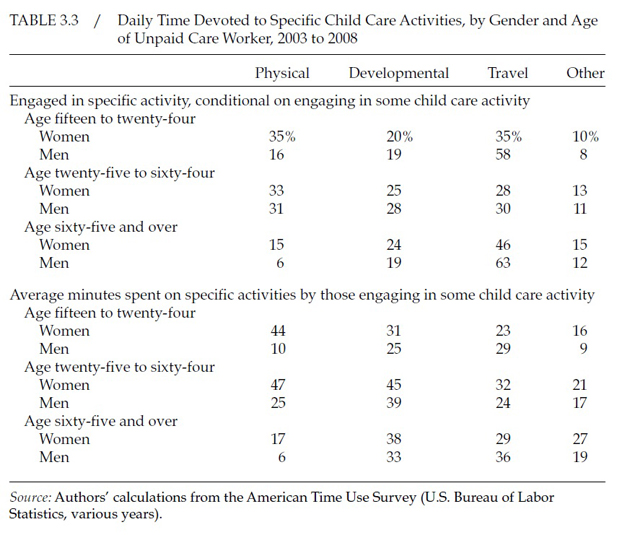Main navigation
 In our latest book, For Love and Money: Care Provision in the United States, Suzanne Bianchi, Nancy Folbre and Douglas Wolf examine a difficult topic for many households: Who should provide the unpaid care? In other words, who should devote time to child care, adult care, and the household chores? As women have increasingly moved into the workforce over the last forty years, do men now devote additional time to caregiving, or do inequalities remain?
In our latest book, For Love and Money: Care Provision in the United States, Suzanne Bianchi, Nancy Folbre and Douglas Wolf examine a difficult topic for many households: Who should provide the unpaid care? In other words, who should devote time to child care, adult care, and the household chores? As women have increasingly moved into the workforce over the last forty years, do men now devote additional time to caregiving, or do inequalities remain?
The figure below, taken from the volume's third chapter, shows the total amount of time allocated by men and women to the four main categories of time use during a representative twenty-four-hour period. The data is taken from the American Time Use Survey, which asks respondents to report how many minutes of a selected day are spent on care activities. Paid work includes time spent working for pay and traveling to and from work; self-maintenance is time spent on activities such as sleeping and eating; and leisure tracks time spent on socializing, reading and other recreational activities.

When you consider both paid work and unpaid care, men and women average about the same amount of time devoted to work. But the divide is clear: men spend relatively more time on paid work, and women spend more time on unpaid care. The figure below looks more closely at the category of unpaid care, which includes both interactive care—activities that involve direct interaction with care recipients—and support care, which includes activities like household chores (cooking, shopping, etc.) and other support tasks (volunteer activities to assist others). There are relatively small differences in interactive care, but as the authors note, "Although both men and women provide more support care as they age...women consistently provide more than men."

Let's look more closely at interactive child care. When adults interact with their children, what exactly are they doing? The table below has four categories: physical care (such as feeding or changing diapers), developmental care (reading aloud or playing with a child), travel with a child, and other activities.

Again, there are some interesting gender differences. Women in both the youngest and oldest age groups who provided child care were more likely than men to provide phsyical care, while men were more likely to travel with children, most likely to take them to different activities. Women also devote far more time, on average, to physical care, and considerably more time to developmental care. You can read more about this research in For Love and Money; its first chapter is available for free.





